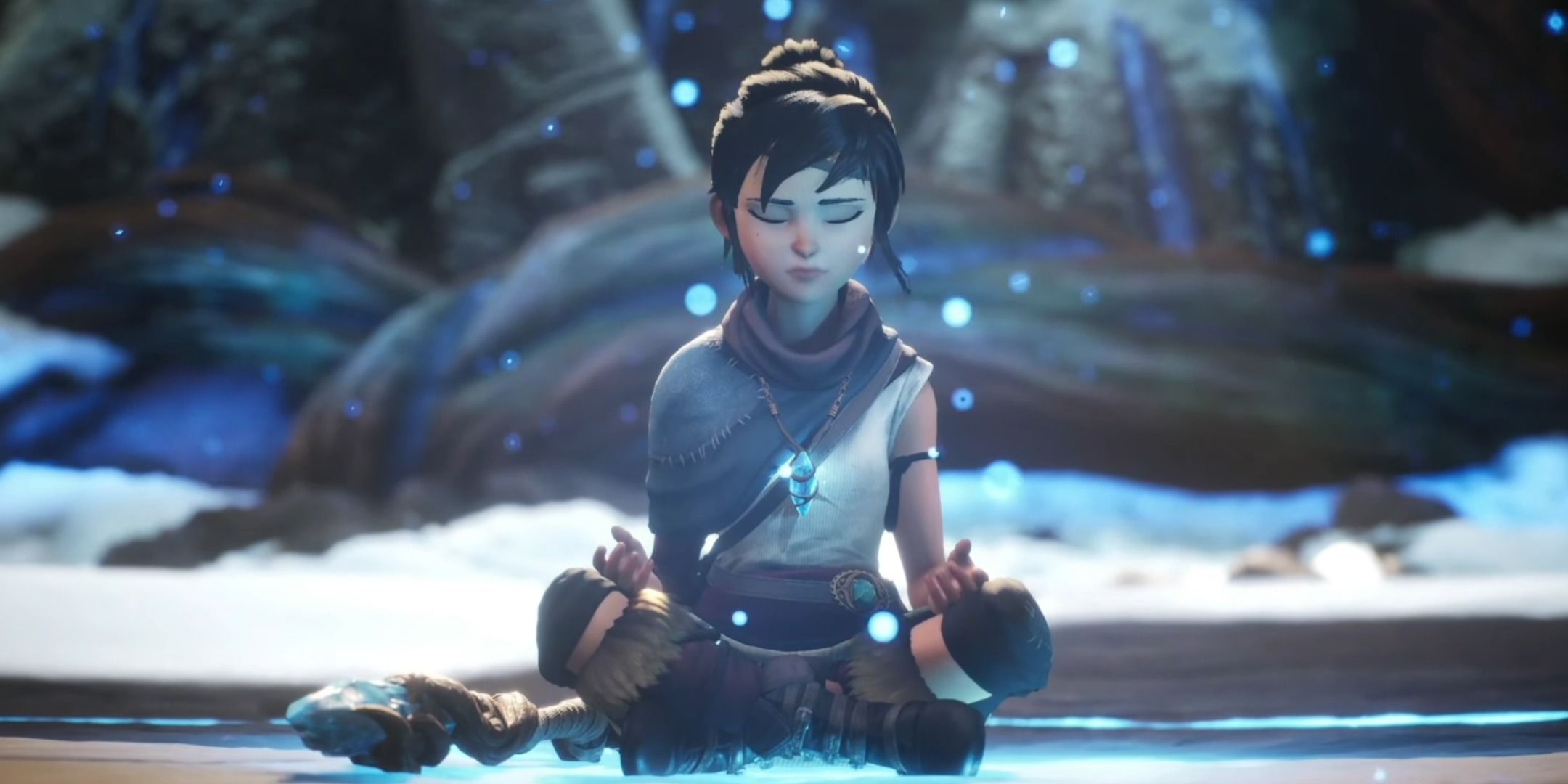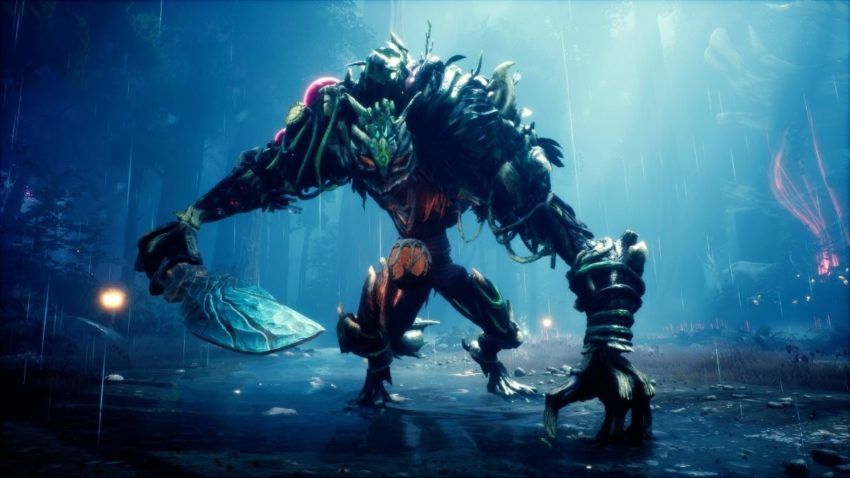The trajectories of Ember Lab as a studio and Tod Fennell, voice of Taro in Kena: Bridge of Spirits, feel in-step with one another. Ember Lab began life as an animation studio, moving into video games as the pieces fell into place. Likewise, Fennell comes from a more traditional acting background and has a history of screenwriting prior to finding his place in video games. To hear Fennell tell it, it’s the collaborative nature of video games that allows it to bring in a wider range of talent and voices than the relatively closed clubs of film and theatre.“It's a melting pot of cultures,” Fennell says of the games industry. “Film tends to be a little insular, it's the ‘Film Industry’ and everyone in it has been doing it for so long. Gaming kind of brings tech into it - there are coders, there's the artistic side, there are writers, and they're all functioning in a different environment which makes up gaming. Then you bring in all the actors and you bring in the consultants for different games. It brings in a lot of different cultures and it creates an interesting environment where they all kind of co-mingle together. It forces you to put away the BS and work with lots of other people.”Of course, despite the differences between film and gaming, it’s in their similarities where Kena has shone. As you’d expect for an animation studio, the game has been praised first and foremost for how it looks, with Kena’s round, bright aesthetic meaning the game’s graphics can punch way above their weight compared to more expensive blockbuster triple-A titles chasing photorealism. “I think with Ember Lab coming from animation, they had this all built in method of storytelling,” Fennell says. “They bring something unique to gaming. The more ways you can come at a problem, the better you solve it. And ultimately, not just solve a problem, but create something that is different than what already exists. I think people notice that they feel it even if they can't understand it. I still don't fully get why Kena’s so different, but I think people see that it is. PlayStation and Sony have heavily endorsed this game, even though it's coming from a smaller company, because I think they recognise it as well. It's something completely different and gamers have a thirst for something completely different right now.” It’s not just the visuals that Kena owes to Ember Labs’ origins - Fennell thinks the overall direction shows the studio’s wider experience too. “Now video games are telling these kinds of emotional stories, I think it was received well,” Fennell says. “It's that cartoony feel and you get those really emotional cutscenes, but then it’s not always [like that]. With the Rot, they're so cute and bouncy, but then [Kena] really is a badass when it comes to fighting. The skills and the music changes, and the lighting changes, and the boss battles are epic. [Ember Labs] walked those two worlds - they have their feet in both of those worlds and you transition from one to the next so you never feel like you're stuck in one vibe. It never gets boring. It stays dynamic.”Fennell’s role in Kena is an interesting one. He plays Taro, but Taro spends most of the game corrupted - Act One is all about freeing him from his corruption, and the character does not appear after that, having found his peace. “There's no hero's journey for my character, but there is still a message,” Fennell explains. “Kena clearly says - spoiler alert for my character - she says ‘it's not your fault’. That's so important because people who are trying to do the right thing, inevitably you're going to make a mistake. Inevitably you're going to let someone down. You can't save them all. We're racked with guilt for little tiny mistakes. We're wired that way. We have a failure, and we hyper focus on the failure as opposed to all of the things that are going well. What corrupted his spirit was all that guilt, and there was nothing he could have done. We all have to remember that we can make one mistake or let somebody down. We can't always win.”
It’s not just the visuals that Kena owes to Ember Labs’ origins - Fennell thinks the overall direction shows the studio’s wider experience too. “Now video games are telling these kinds of emotional stories, I think it was received well,” Fennell says. “It's that cartoony feel and you get those really emotional cutscenes, but then it’s not always [like that]. With the Rot, they're so cute and bouncy, but then [Kena] really is a badass when it comes to fighting. The skills and the music changes, and the lighting changes, and the boss battles are epic. [Ember Labs] walked those two worlds - they have their feet in both of those worlds and you transition from one to the next so you never feel like you're stuck in one vibe. It never gets boring. It stays dynamic.”Fennell’s role in Kena is an interesting one. He plays Taro, but Taro spends most of the game corrupted - Act One is all about freeing him from his corruption, and the character does not appear after that, having found his peace. “There's no hero's journey for my character, but there is still a message,” Fennell explains. “Kena clearly says - spoiler alert for my character - she says ‘it's not your fault’. That's so important because people who are trying to do the right thing, inevitably you're going to make a mistake. Inevitably you're going to let someone down. You can't save them all. We're racked with guilt for little tiny mistakes. We're wired that way. We have a failure, and we hyper focus on the failure as opposed to all of the things that are going well. What corrupted his spirit was all that guilt, and there was nothing he could have done. We all have to remember that we can make one mistake or let somebody down. We can't always win.” This is a new take on corruption for video games. Too often, corruption is associated with greed, or power, or evil. Somebody who has been corrupted is a villain to be felled. In Kena, they are souls to cleanse. Taro’s corruption changes the way he sees himself, and Kena has to guide him out of that despair. “There's so much pain,” Fennell says of Taro’s character. “There's a lot of loss, there's a lot of pain, there's a lot of guilt. If you can't move past the guilt, it can corrupt a person. In real life, you don't turn into a tree with roots attacking people, but it's a beautiful metaphor because it's true. You start making everyone around you dark if you don't deal with those emotions and process them properly. It’s very cool in a game to see that kind of storytelling, and [it’s] not heavy-handed either. You're just along for the ride, it's not being hammered in. You're along [for] the story - it's one spirit at a time to be freed.”
This is a new take on corruption for video games. Too often, corruption is associated with greed, or power, or evil. Somebody who has been corrupted is a villain to be felled. In Kena, they are souls to cleanse. Taro’s corruption changes the way he sees himself, and Kena has to guide him out of that despair. “There's so much pain,” Fennell says of Taro’s character. “There's a lot of loss, there's a lot of pain, there's a lot of guilt. If you can't move past the guilt, it can corrupt a person. In real life, you don't turn into a tree with roots attacking people, but it's a beautiful metaphor because it's true. You start making everyone around you dark if you don't deal with those emotions and process them properly. It’s very cool in a game to see that kind of storytelling, and [it’s] not heavy-handed either. You're just along for the ride, it's not being hammered in. You're along [for] the story - it's one spirit at a time to be freed.”

.jpg)